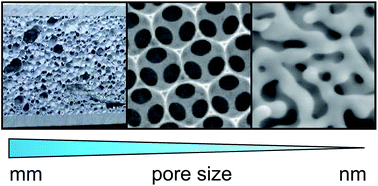Controlled fabrication of porous metals from the nanometer to the macroscopic scale
Abstract
Porous metals such as foams and sponges are produced by a wide variety of industrially applied techniques mainly for load bearing and structural applications. Their functional properties are much less explored, mainly due to the difficulty to simultaneously control the relative density, the pore structure and the macroscopic shape during their fabrication, which however would be required to control the functionality. Accordingly, to take full advantage of the mechanical and functional properties of porous metals, new synthesis methodologies have to be developed that address all structural features from the nanoscopic to the macroscopic scale. Thus, in this review we provide an overview of the different techniques to prepare porous metals with the focus on evaluating them with respect to their flexibility and ability to control and tailor the architecture over several length scales. We discuss the advantages and limitations of the different methods, correlate them with the properties of the resulting porous metals and present potential applications. In the last part of the review, we outline a wet-chemical deposition route to metallic copper, which can be applied to a wide variety of flat and spherical substrates, giving access to both copper sponges with defined porosity and relative density as well as complex macroscopic shapes and to copper line patterns on flexible substrates.


 Please wait while we load your content...
Please wait while we load your content...